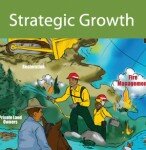
This “blueprint” shows the 9 implementation teams charged with implementing the 24 vision recommendations.
Moving Implementation Forward
The Conserving the Future implementation teams’ work plans move the 24 recommendations from concepts to action steps. They not only outline products and deliverables, including information about approach and timelines, but the work plans also give partners and U.S. Fish and Wildlife Service employees specifics about how the recommendations will become reality on the ground. Sub-teams, surveys, collaboration, and a variety of other needs are identified, and as implementation evolves, so will the work plans. Read the work plans for all 24 recommendations in Conserving the Future: Wildlife Refuges and the Next Generation here:
Click on each recommendation to see individual Team Work Plans.
Click on the icon next to each recommendation to go to the implementation team’s Group within the Social Network for draft products and discussion.
 Recommendation 1 : Incorporate the lessons learned from our first round of CCPs and HMPs into the next generation of conservation plans, and ensure these new plans view refuges in a landscape context and describe actions to project conservation benefits beyond refuge boundaries.
Recommendation 1 : Incorporate the lessons learned from our first round of CCPs and HMPs into the next generation of conservation plans, and ensure these new plans view refuges in a landscape context and describe actions to project conservation benefits beyond refuge boundaries.
Recommendation 2: Develop a climate change implementation plan for the National Wildlife Refuge System that dovetails with other conservation partners’ climate change action plans and specifically provides guidance for conducting vulnerability assessments of climate change impacts to refuge habitats and species as well as direction for innovation in the reduction of emissions and improved energy efficiency on federal lands.
 Recommendation 3: Undertake a rapid top-to-bottom assessment of the status of all Refuge System land protection projects and complete a report that will inform development of a plan for the strategic, future growth of the Refuge System.
Recommendation 3: Undertake a rapid top-to-bottom assessment of the status of all Refuge System land protection projects and complete a report that will inform development of a plan for the strategic, future growth of the Refuge System.
Recommendation 4: Ensure future land protection efforts are based on explicit priorities, rigorous biological planning and conservation design that support achieving quantifiable conservation and population objectives that are developed in cooperation with state fish and wildlife agencies.
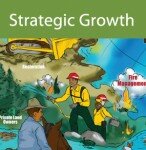 Recommendation 5: Use all of the Service’s conservation tools, especially Partners for Fish and Wildlife, to work nationwide to project conservation benefits beyond refuge boundaries, leveraging resources through partnerships with other governmental agencies, conservation groups and private landowners and achieving mutually shared and scientifically sound restoration and protection goals around refuges.
Recommendation 5: Use all of the Service’s conservation tools, especially Partners for Fish and Wildlife, to work nationwide to project conservation benefits beyond refuge boundaries, leveraging resources through partnerships with other governmental agencies, conservation groups and private landowners and achieving mutually shared and scientifically sound restoration and protection goals around refuges.
 Recommendation 6 : Provide each refuge with access to resources to fully implement the principles of adaptive management.
Recommendation 6 : Provide each refuge with access to resources to fully implement the principles of adaptive management.
 Recommendation 7: Institutionalize a purpose-driven, nationally coordinated effort to inventory and monitor wildlife and habitats to obtain data that inform planning and management decisions; and develop a state-of-the-art data management system that can be integrated with the broader scientific community and key partners.
Recommendation 7: Institutionalize a purpose-driven, nationally coordinated effort to inventory and monitor wildlife and habitats to obtain data that inform planning and management decisions; and develop a state-of-the-art data management system that can be integrated with the broader scientific community and key partners.
 Recommendation 8: Create a new, quadrennial report on the state of the Refuge System starting in 2015, as part of an effort to report on the status and trends of wildlife and habitat in the System and ensure that all data gathered are easily accessible and shared widely among the Service, the scientific community and the public.
Recommendation 8: Create a new, quadrennial report on the state of the Refuge System starting in 2015, as part of an effort to report on the status and trends of wildlife and habitat in the System and ensure that all data gathered are easily accessible and shared widely among the Service, the scientific community and the public.
 Recommendation 9: Develop and clearly articulate a research agenda for the Refuge System that is management-oriented and grounded in the testing of assumptions, with the explicit purpose of reducing uncertainty in our planning and management decisions.
Recommendation 9: Develop and clearly articulate a research agenda for the Refuge System that is management-oriented and grounded in the testing of assumptions, with the explicit purpose of reducing uncertainty in our planning and management decisions.
 Recommendation 10: Become a major contributor to the scientific community by sharing information and data; publishing scientific findings; participating in professional societies; and engaging with local, regional and national organizations and communities to solve conservation problems.
Recommendation 10: Become a major contributor to the scientific community by sharing information and data; publishing scientific findings; participating in professional societies; and engaging with local, regional and national organizations and communities to solve conservation problems.
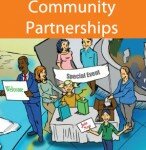 Recommendation 11: Develop and nurture active and vibrant Friends groups or community partnerships for every staffed refuge or refuge complex.
Recommendation 11: Develop and nurture active and vibrant Friends groups or community partnerships for every staffed refuge or refuge complex.
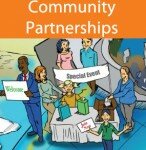 Recommendation 12: Develop a national strategy for recruiting, coordinating and supporting a more self-sustaining volunteer corps, while creating new opportunities for community involvement in implementing refuge priorities.
Recommendation 12: Develop a national strategy for recruiting, coordinating and supporting a more self-sustaining volunteer corps, while creating new opportunities for community involvement in implementing refuge priorities.
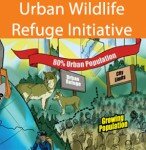 Recommendation 13: Create an urban refuge initiative that defines excellence in our existing urban refuges, establishes the framework for creating new urban refuge partnerships and implements a refuge presence in 10 demographically and geographically varied cities across America by 2015.
Recommendation 13: Create an urban refuge initiative that defines excellence in our existing urban refuges, establishes the framework for creating new urban refuge partnerships and implements a refuge presence in 10 demographically and geographically varied cities across America by 2015.
 Recommendation 14: Create a strategic communications plan that educates the public about our mission and accomplishments, and creates a positive, professional ‘brand’ for the System.
Recommendation 14: Create a strategic communications plan that educates the public about our mission and accomplishments, and creates a positive, professional ‘brand’ for the System.
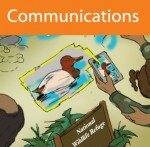 Recommendation 15: Develop integrated mechanisms for using web-based and other emerging technologies to store and share data, communicate within the System, and inspire and educate visitors and the public.
Recommendation 15: Develop integrated mechanisms for using web-based and other emerging technologies to store and share data, communicate within the System, and inspire and educate visitors and the public.
 Recommendation 16: Conduct a new, independent analysis of refuge law enforcement to measure progress and identify needed improvements.
Recommendation 16: Conduct a new, independent analysis of refuge law enforcement to measure progress and identify needed improvements.
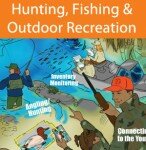 Recommendation 17: The Service will work closely with state fish and wildlife agencies to conduct a review of its current hunting and fishing opportunities, especially opportunities currently offered for youth and people with disabilities. Based on this review, the Service and states will work cooperatively to prepare a strategy for increasing quality hunting and fishing opportunities on national wildlife refuges.
Recommendation 17: The Service will work closely with state fish and wildlife agencies to conduct a review of its current hunting and fishing opportunities, especially opportunities currently offered for youth and people with disabilities. Based on this review, the Service and states will work cooperatively to prepare a strategy for increasing quality hunting and fishing opportunities on national wildlife refuges.
 Recommendation 18: Support and enhance appropriate recreation opportunities on national wildlife refuges by partnering with state fish and wildlife agencies, other governmental bodies, conservation organizations and businesses; and by updating relevant policies and infrastructure.
Recommendation 18: Support and enhance appropriate recreation opportunities on national wildlife refuges by partnering with state fish and wildlife agencies, other governmental bodies, conservation organizations and businesses; and by updating relevant policies and infrastructure.
 Recommendation 19: Develop an interpretation strategy that builds upon current Service standards and guidelines, takes advantage of multiple modes of delivering messages, reaches diverse audiences, and measures the effectiveness of our programs in partnership with key government agencies, the National Association for Interpretation and other professional organizations.
Recommendation 19: Develop an interpretation strategy that builds upon current Service standards and guidelines, takes advantage of multiple modes of delivering messages, reaches diverse audiences, and measures the effectiveness of our programs in partnership with key government agencies, the National Association for Interpretation and other professional organizations.
 Recommendation 20: Develop an environmental education strategy that inventories existing efforts, identifies priorities for investment of staff and funds, and outlines basic standards for all refuges.
Recommendation 20: Develop an environmental education strategy that inventories existing efforts, identifies priorities for investment of staff and funds, and outlines basic standards for all refuges.
 Recommendation 21: Assemble an evaluation team consisting of Service and Refuge System leaders to report to the Service Directorate on opportunities for organizational realignments or programmatic efficiencies.
Recommendation 21: Assemble an evaluation team consisting of Service and Refuge System leaders to report to the Service Directorate on opportunities for organizational realignments or programmatic efficiencies.
 Recommendation 22: Within the next 10 years, make our workforce match the diversity in the civilian labor workforce. Recruit and retain a workforce that reflects the ethnic, age, socioeconomic and cultural backgrounds, and language diversity of contemporary America.
Recommendation 22: Within the next 10 years, make our workforce match the diversity in the civilian labor workforce. Recruit and retain a workforce that reflects the ethnic, age, socioeconomic and cultural backgrounds, and language diversity of contemporary America.
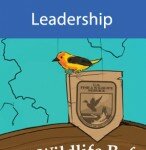 Recommendation 23: Revisit Fulfilling the Promise and seek innovative ways to address the recommendations therein to reinvigorate our commitment to leadership development.
Recommendation 23: Revisit Fulfilling the Promise and seek innovative ways to address the recommendations therein to reinvigorate our commitment to leadership development.
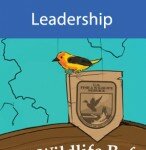 Recommendation 24: Develop and mentor Refuge System employees so they are fully equipped to accept the responsibilities of leadership at all levels in the Service.
Recommendation 24: Develop and mentor Refuge System employees so they are fully equipped to accept the responsibilities of leadership at all levels in the Service.

